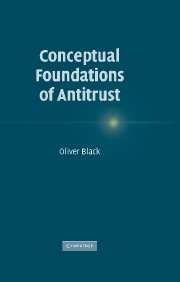6 - The spectrum from independent action to collusion
Published online by Cambridge University Press: 08 July 2009
Summary
Overview
A persistent question for antitrust is how to deal with the spectrum that runs from independent action to collusion: conduct at any point on the spectrum can be anti-competitive, but different types of intervention are appropriate for different points. The collusive end is suited to provisions such as Article 81 EC, section 2 of the UK Competition Act 1998 and section 1 of the US Sherman Act, which deal with agreements, concerted practices and conspiracies. At the independent end various approaches may be effective: a market investigation, as under Part 4 of the Enterprise Act; regulation, as applied to utilities; where dominance is an issue, the application of provisions such as Article 82 EC, section 18 of the Competition Act and section 2 of the Sherman Act (with collective, rather than sole, dominance we start to move along the spectrum towards collusion); and, where there is a concentration, the application of merger control.
The middle of the spectrum contains the hard cases, in particular the ‘oligopoly problem’: this, as explained in chapter 5, is the fact that in certain circumstances oligopolists will display parallel behaviour which is anti-competitive but results from decisions that are plausibly described as made on an individual basis. One question is whether the types of intervention fitted to the collusive end can, without distorting the concepts they use, be extended to any such cases and, if so, to which.
- Type
- Chapter
- Information
- Conceptual Foundations of Antitrust , pp. 184 - 193Publisher: Cambridge University PressPrint publication year: 2005



